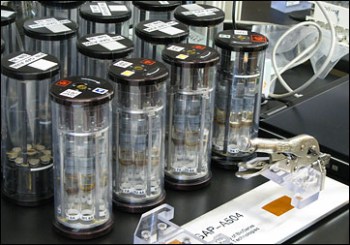The assistant professor of chemical and biological engineering at Rensselaer, Cynthia Collins, is conducting a series of experiments known as Micro-2A that will be on board the NASA Space Shuttle Atlantis.
The research will help to explain how microgravity affects the growth of potentially harmful bacteria. The research will closely examine the formation of tough-to-kill colonies known as biofilms. The research will be useful for offering protection to astronauts who are in enclosed as well as tough-to-clean areas in space, including the International Space Station. It can also have key implications for safeguarding astronauts during extended space missions in our solar system. It gives new insights in the struggle against dangerous bacterial infections including food poisoning, staph, pneumonia, and sepsis.
 Collins and her team will send up 16 devices, called Group Activation Packs (GAPs) and each containing eight vials of bacteria, aboard the NASA Space Shuttle Atlantis
Collins and her team will send up 16 devices, called Group Activation Packs (GAPs) and each containing eight vials of bacteria, aboard the NASA Space Shuttle Atlantis
The NASA Ames Research Center is providing funds for the research. Previously, Collins’ research was also aboard the May 14, 2010 shuttle mission. She has analyzed the results of her previous research and will utilize them to conduct the new series of experiments. Collins will use the Staphylococcus aureus and Pseudomonas aeruginosa for her experiments. According to Collins, these bacteria have contributed for major cases of hospital-acquired infections.
Collins and her group will send 16 devices aboard the shuttle, known as Group Activation Packs (GAPs). Each GAP will have eight vials of bacteria. While in orbit, astronauts will open the sealed GAPs and mix the bacteria with nutrients and place it on a surface on which biofilms are formed. During the same time, Collins will do the same actions with GAPs at the Kennedy Space Center in Florida. After the return of the shuttle, her team will compare the two biofilms to determine the difference in nature of bacteria and development of biofilms on earth and in microgravity.
The research team will also examine if a newly formed antimicrobial surface can hamper the growth of methicillin resistant Staphylococcus aureus (MRSA) on earth and in microgravity. For the research, a unique and safe version of the MRSA bacteria exhibiting similar properties will be used. With the help of an enzyme found in nature, the newly formed antimicrobial surface kills 100% of MRSA within 20 minutes.
The new technology combines lysostaphin with carbon nanotubes. Lysostaphin, freely available in nature, can be used by non-pathogenic strains of staph bacteria to offer protection against staph. The resulting biomaterial can be combined with several surface finishes.